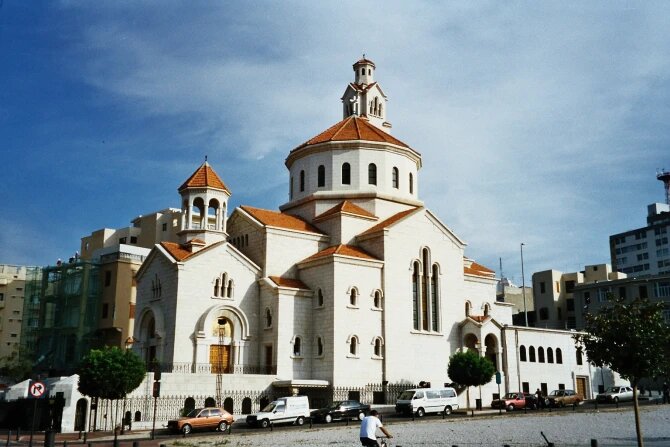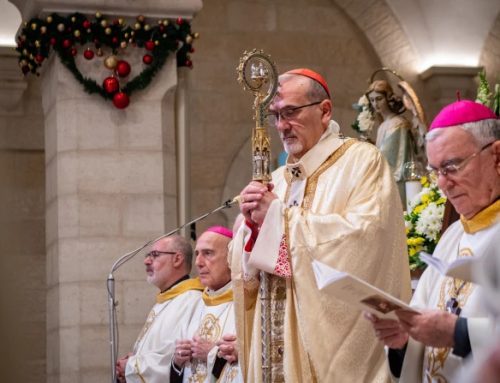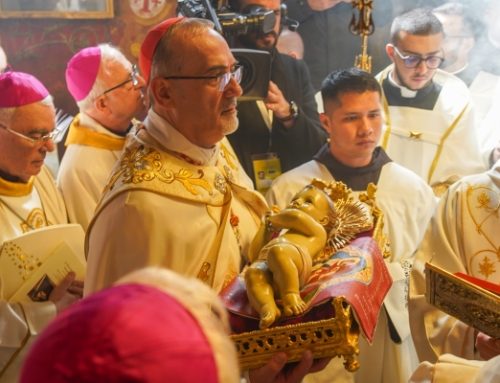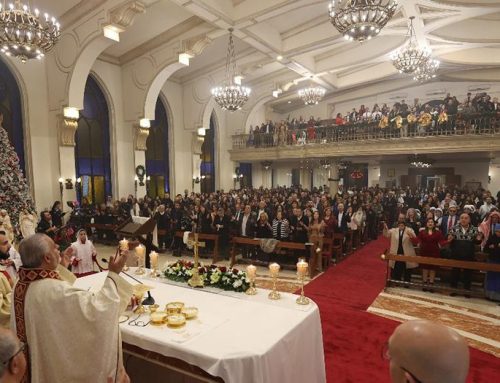The Middle East edged closer to large-scale crisis this week as Iran launched a volley of missile attacks on Israel and Israel continued its bombardment of southern Lebanon.
For a Middle Eastern nation, Lebanon has a large and influential Christian population. The latest figures show that Lebanon remains about 70% Muslim and about 30% Christian, according to a 2022 international religious freedom report by the U.S. Department of State — a far higher percentage of Christians than its neighbors.
Christianity in Lebanon traces its roots to the dawn of Christianity itself — in fact, Christ himself visited Lebanon. The Bible mentions the ancient pagan trading towns of Tyre and Sidon, both of which still exist today as major cities in southern Lebanon, dozens of times.
Just a couple of years ago, Lebanon was one of the most peaceful nations in the Middle East and — despite some serious domestic problems that can’t be overlooked — a model for other countries in the region for how Christians and Muslims can coexist in the same country in relative peace.
Of the Muslims in Lebanon, they are split about evenly between Sunni and Shiites. Hezbollah, the political party and militant group that has been in the news, is Shia and deeply aligned with Iran, which is also majority-Shia.
Who are Lebanon’s Christians?
The majority — over half — of Lebanon’s Christians belong to the Maronite Church, an Eastern Catholic rite in full communion with the pope. There are about 3.5 million Maronites worldwide.
St. Maron, the Church’s namesake, was a Syriac-speaking hermit who is believed to have died in the early fifth century. Later on in the mid-fifth century, Maron’s disciples established a monastery named after him that thrived for many years until the Muslim conquest of the region, which led the Maronites to move their monastery from present-day Syria to the mountains of Lebanon.
Enduring persecution by various groups over the centuries, the Maronites retained a strong relationship with the popes. The Maronite College in Rome was founded by Gregory XIII in 1584.
Gaining influence within Lebanon and abroad, Maronite emigrants began leaving the country in the mid-19th century, bringing their religion with them.
Other Christian groups present in Lebanon, according to the U.S. State Department, include Greek Catholics (Melkites), Armenian Orthodox, Armenian Catholics, Syriac Orthodox, Syriac Catholics, Assyrians, Chaldean Catholics, Copts, Protestants (including Presbyterians, Baptists, and Seventh-day Adventists), and Roman Catholics.
After a long civil war from 1975 to 1990, Lebanon gained a reputation for being one of the most peaceful and prosperous nations in the Middle East. In later years, however, Lebanon’s people began suffering from a nationwide financial crisis.
Then came the August 2020 Beirut port explosion, one of the largest nonnuclear, man-made explosions in human history, which took place at Beirut’s vital port caused by a stockpile of dangerous chemicals that had sat at the port for years amid negligence and corruption.
Most of the neighborhoods of Beirut destroyed in the explosion were majority-Christian, which exacerbated an exodus of Christians from the country.
In addition, the country’s Muslim population has been massively bolstered since 2011 by an influx of mostly-Muslim refugees from neighboring Syria, fleeing that country’s brutal civil war. According to the U.N. refugee agency, Lebanon has taken in at least 1.5 million Syrian refugees — a massive number for such a small country and one of the highest proportions of any country in the world.
St. Charbel Maklouf
St. Charbel is perhaps the best-known Maronite saint, other than St. Maron himself, lending his name to Maronite churches across the world.
He was born Yussef Antoun Makhlouf to a humble Lebanese family in 1828, the youngest of five children. As a boy, he spent a great deal of time outdoors in the fields and pastures near his village, contemplating God amid the inspiring views of Lebanon’s valleys and mountains.
His family wanted him to get married, but the young man had other ideas. He trekked on foot to the Monastery of St. Maron, where he took his monastic vows in 1853. After studying for the priesthood, he was ordained and returned to the monastery where he would humbly serve for the next 19 years. He showed great devotion to the life of prayer, manual work, and contemplative silence.
In 1875, he was granted permission to live in solitude at a nearby hermitage. He spent the next 23 years there, until his death.

St. Charbel was deeply devoted to God’s presence in the Eucharist. On Dec. 16, 1898, Charbel suffered a stroke while celebrating the Maronite Divine Liturgy (the Maronite equivalent of the Mass).
He died on Christmas Eve of that year, and Pope Paul VI canonized him in 1977.
The former monastery and nearby hermitage where St. Charbel lived out his last days is located in Annaya, an hour north of Beirut and in the hills nine miles inland from the coast. It remains a place of pilgrimage for Christians and Muslims alike, who come seeking miraculous healings.
Since 1950, when St. Charbel’s tomb was first opened, the shrine has archived some 29,000 medically-verified healings.
What’s the latest in Lebanon?
ACI Mena, CNA’s Arabic-language news partner in the Middle East, has been reporting on the plight of Christians in Lebanon. In late September, it reported that the Keserwan district of Mount Lebanon, known as the heart of the Christian community due to its large Maronite population and the presence of important religious sites like the Maronite Patriarchate and the Shrine of Our Lady of Lebanon, has been subject to Israeli airstrikes targeting a Hezbollah official.
Aid to the Church in Need reported in December that about 90% of those living in southern Lebanon’s Christian villages have fled their homes amid the rocket strikes between Israel and Hezbollah.
The situation in Lebanon is evolving and changing every day. A Sept. 26 report from the agency noted that amid the Israeli attacks, “Christian towns remain far from direct bombardment, even if they have their share of shrapnel.”
However, Christian cities and towns across Lebanon are now crowded with people displaced from the southern villages. Beirut and its suburbs are seeing some Christian families move to their summer homes in rural areas.
A Maronite priest, Father Marwan Ghanem, personally witnessed the recent Israeli pager attack that killed and wounded hundreds of Hezbollah operatives and told ACI Mena about the experience.
Ghanem said after the coordinated explosions happened he stopped to help three wounded people. He said he did not consider whether they were Muslim or Christian but rather recognized “the face of the wounded Christ on the road.” In such dire circumstances, he said, there is no distinction between a Christian and a Muslim but rather everyone is human, created in the image of God.
By Jonah McKeown | catholicnewsagency






